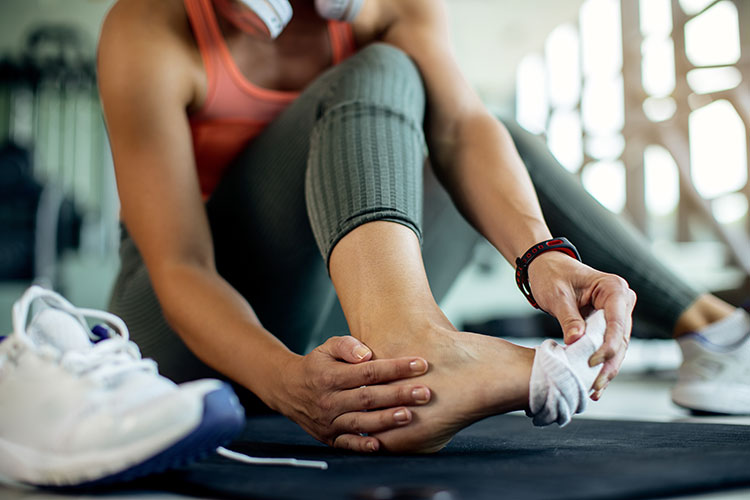
If you’re a keen sportsperson, there’s nothing more upsetting that experiencing an injury that leaves you out of action for a number of games, tournaments or competitions. You love your sport and having to sit on the sidelines as you watch your friends or fellow teammates tackle an opponent can be deeply demoralising. You’ll also know that your fitness is decreasing and your muscle is wasting away while you’re out of action, which can add to the frustration. This guide is all about how you can recover quickly and reliably from a sports injury of any kind.
Doctor’s Advice
Before continuing with the guide, it’s important to point out that any advice shared here is based on the proviso that you first seek expert medical attention for your injury. If you’re in pain and you feel that your injury is serious, you should attend your local hospital to get checked out.
Even if you feel that your injury isn’t serious enough to visit the doctor, you should still consider calling up your GP’s office to get a consultant, first on the phone and then in person. Failing that, you should look into sports injury doctors who you can visit privately for a consultation. Experts are the people who’ll have the best advice on how you can recover from your injury.
You can find a qualified and experienced sports doctor from a reputable healthcare institution to get expert advice about the best recovery treatments for sports injuries.
For example, Brixton Therapy Centre massage therapists are highly trained to perform sports massage using medium to strong pressure and stretching or mobilizing to reduce muscle tension and ease sporting injuries. This can help prevent future injuries, especially for athletes and active sports enthusiasts.
Make sure to compare your options to get the level of intervention you deserve.
Physiotherapy
Many injuries that sports people suffer are the result of poor posture, uneven gait, or a muscular injury related to how they warm-up and cool down. All of these issues are dealt with by sports physiotherapists, who are able to massage and move your body in such as way as to help you recover from a wide variety of sporting injuries.
Physiotherapy may include hot and cold therapy to reduce inflammation and pain. Also, the injury may require using crutches, bracing, or immobilization to ensure steady healing and reduce pain and other complications.
A physiotherapist can create a rehabilitation plan for you following a thorough assessment. You’ll obtain expert advice about routine adjustments and exercise programs for a specific sports injury. Furthermore, they may recommend additional treatments, such as myofascial trigger release, sports massage, or dry needling, to further your recovery goals.
Myofascial release therapy relieves tightness throughout the myofascial tissues through gentle, constant massage. The physiotherapist applies gentle pressure until you feel the tension fade.
On the other hand, dry needling uses a thin filiform needle, penetrating the skin and stimulating underlying myofascial trigger points and connective and muscle tissues to improve blood flow and reduce muscle tightness and pain.
Rehabilitation can take a couple of days, weeks, or months, depending on the injury’s type, location, and severity.
The best sports physiotherapists in Edinburgh are those who will know exactly how to twist and massage your body so that your injury melts away – though they’ll, of course, advise you to be careful and not place too much stress on your injury until you’re confident that you can use your body at 100% as a sportsperson once again.
Upping Training
When you get injured, you’ll be out of your regular training routine for weeks or even months. Once you feel that you’re getting better, though, you shouldn’t simply resume your training where you left off. Instead, you should take care to slowly up the amount of training you’re doing, starting from a low base at which you’re not asking too much of the injured part of your body.
You should exercise patience here, as every little strain on a muscle that’s only just recovered from an injury could place you right back where you started, with more weeks or months on the sidelines. After every session, use the advice of physios and your doctor to warm down correctly, stretching key areas in order to avoid your muscles seizing up and your body returning to injury. Be careful, take your time, and you’ll eventually fully recover your fitness levels.
Use the simple advice shared above in order to recover as quickly as possible from a sporting injury this year.
related post
related store
TBD

Leave a Reply